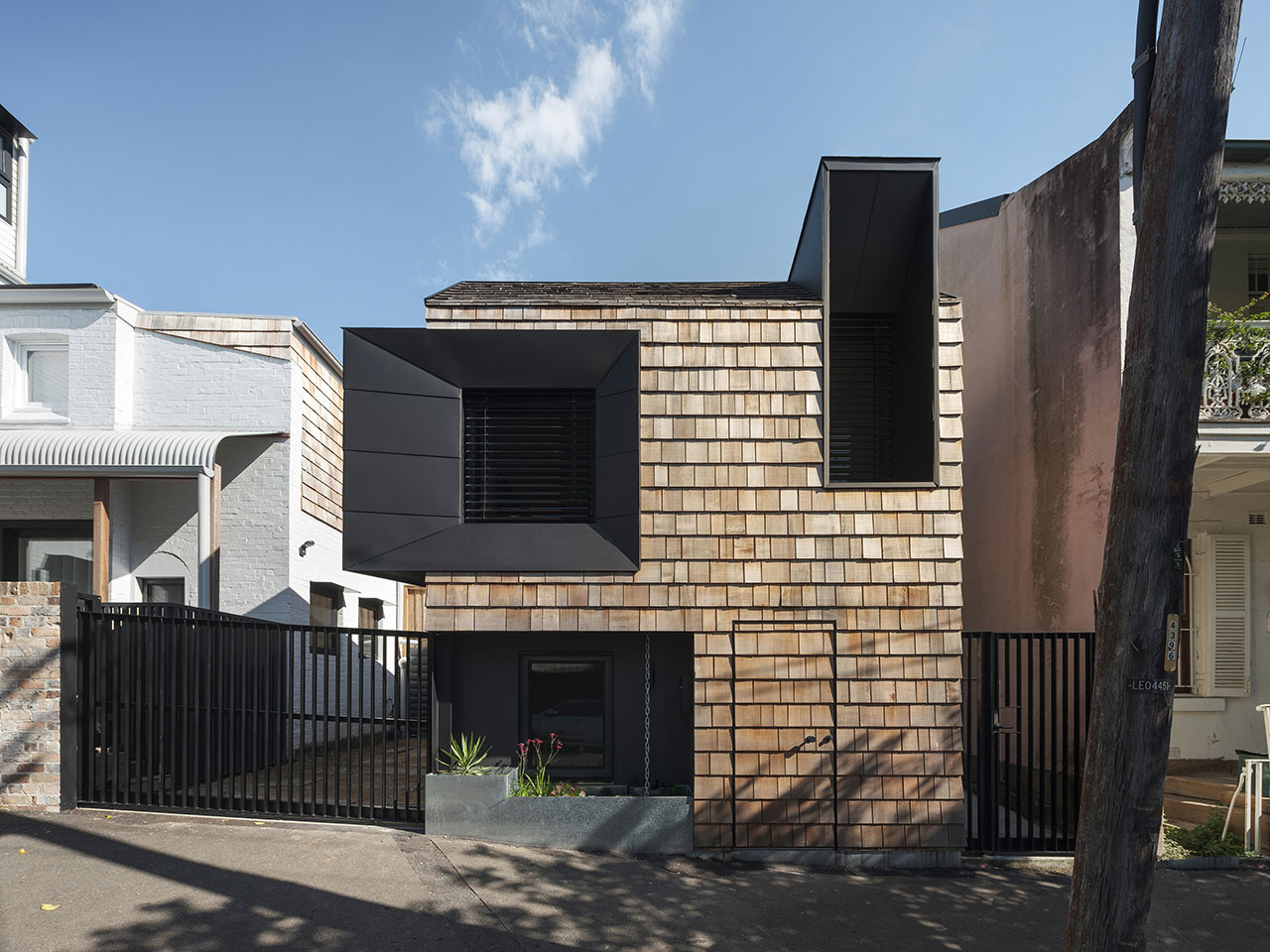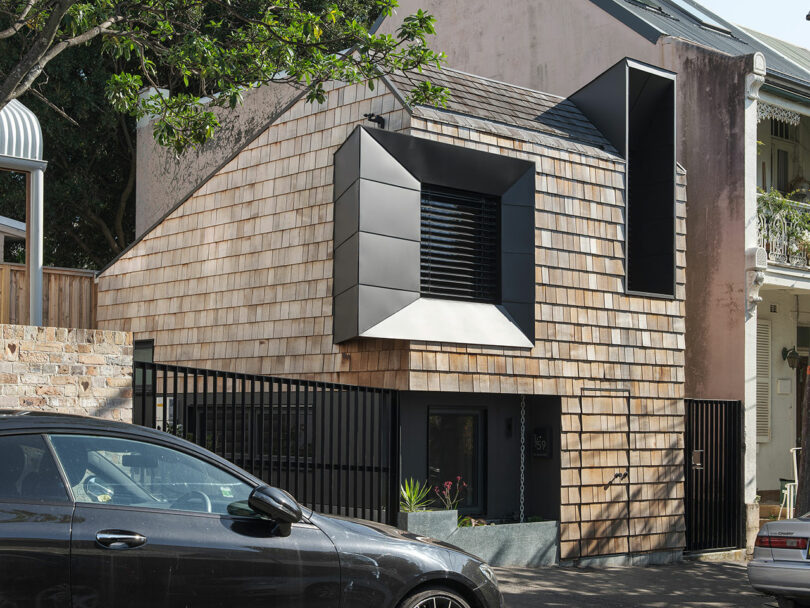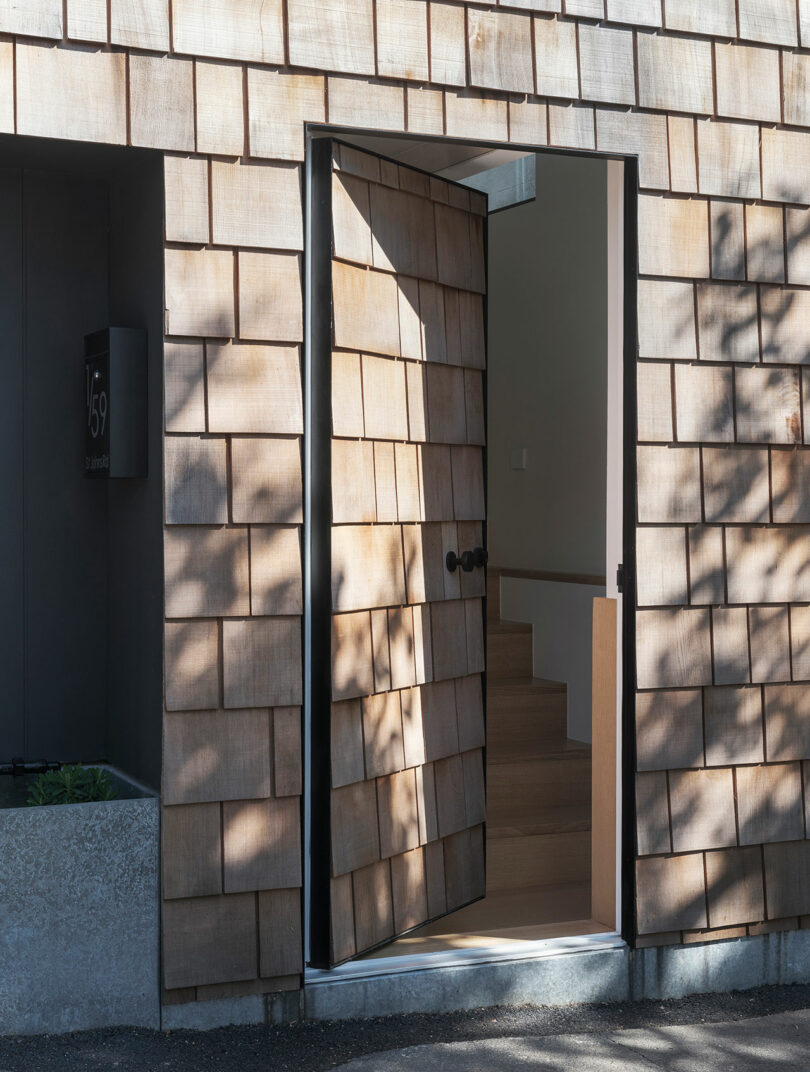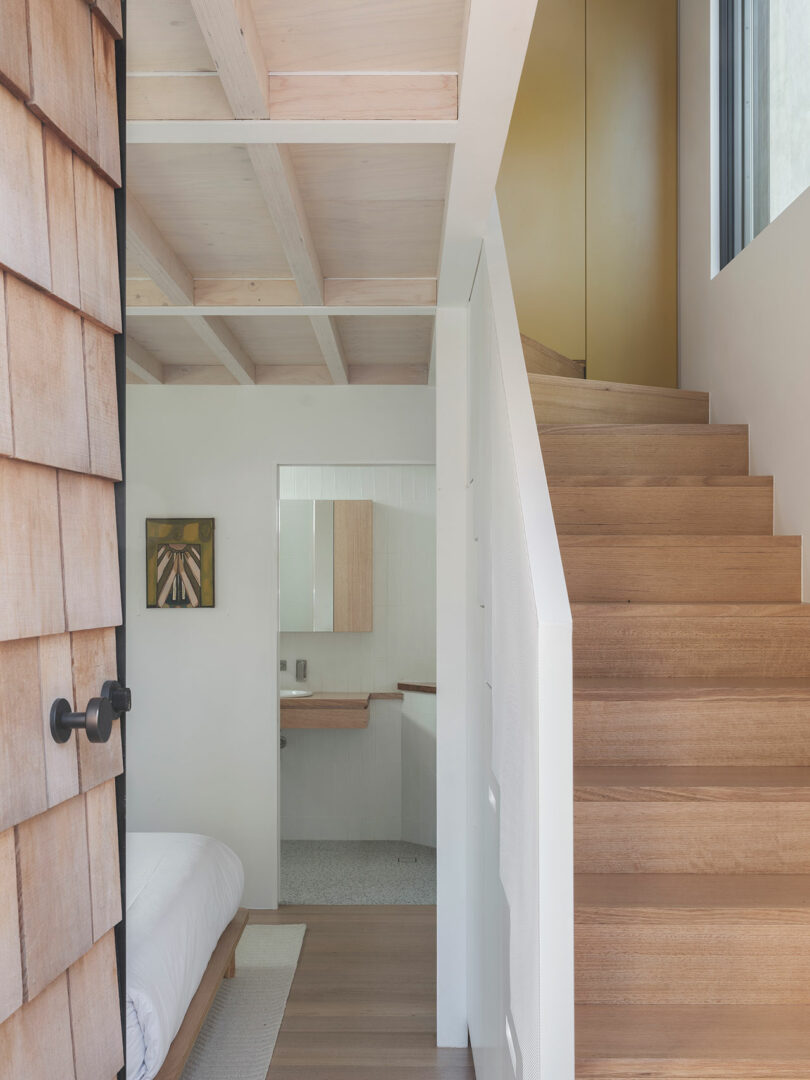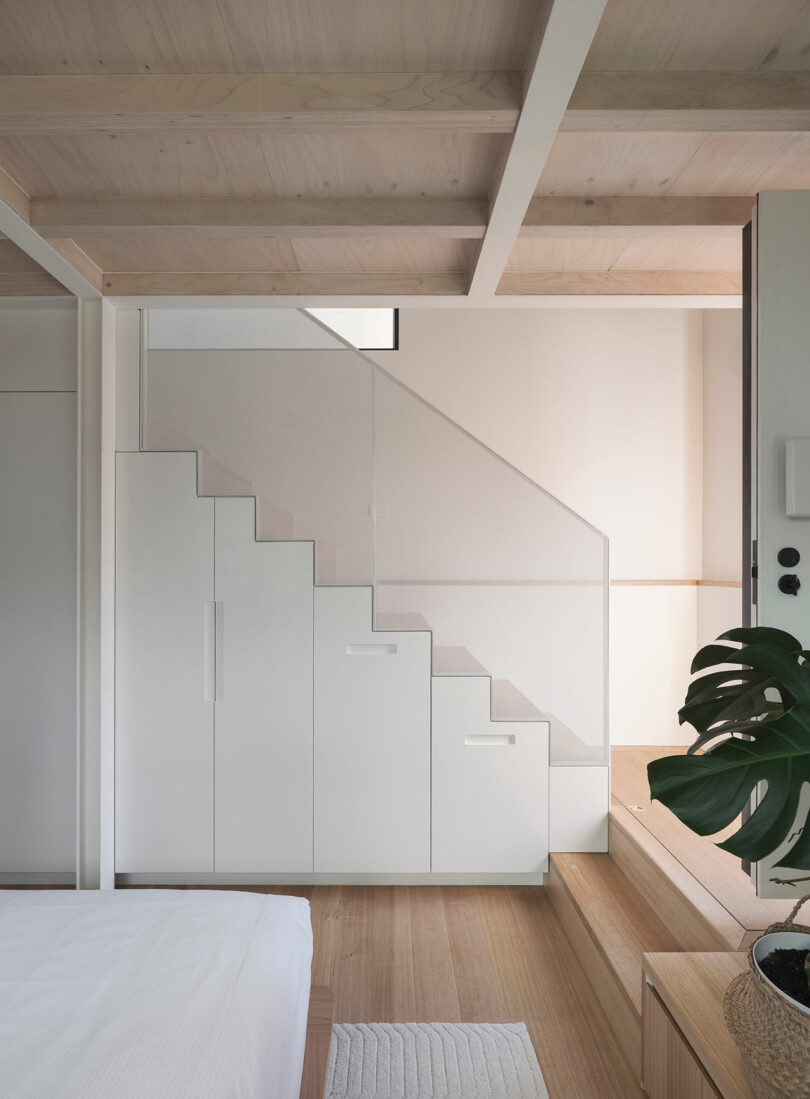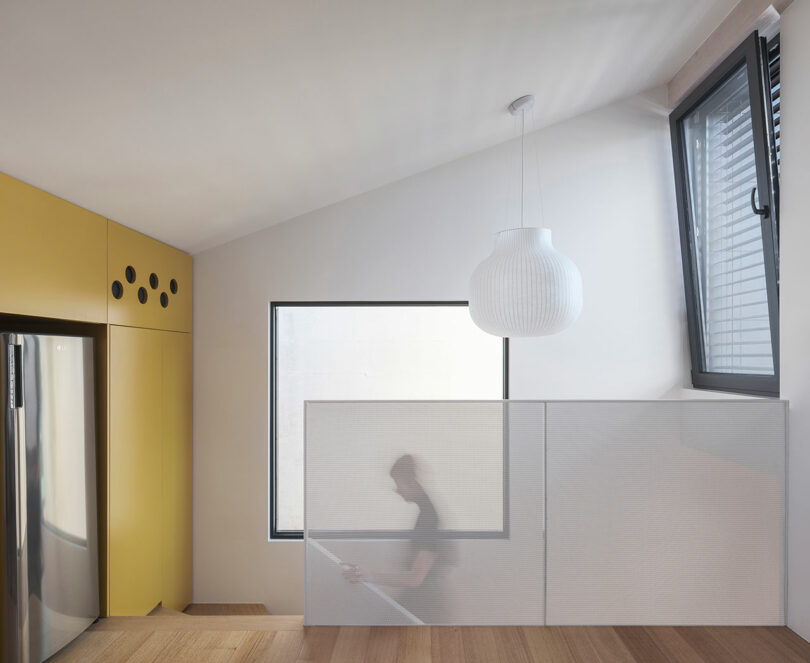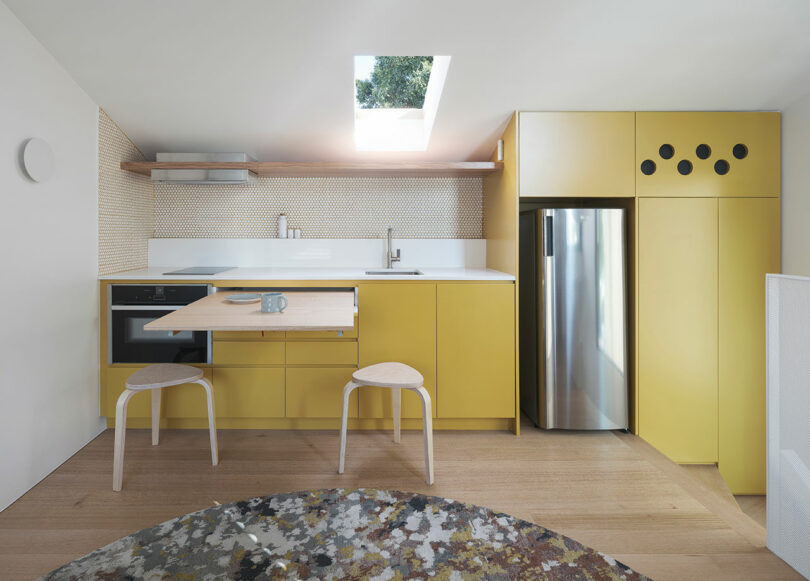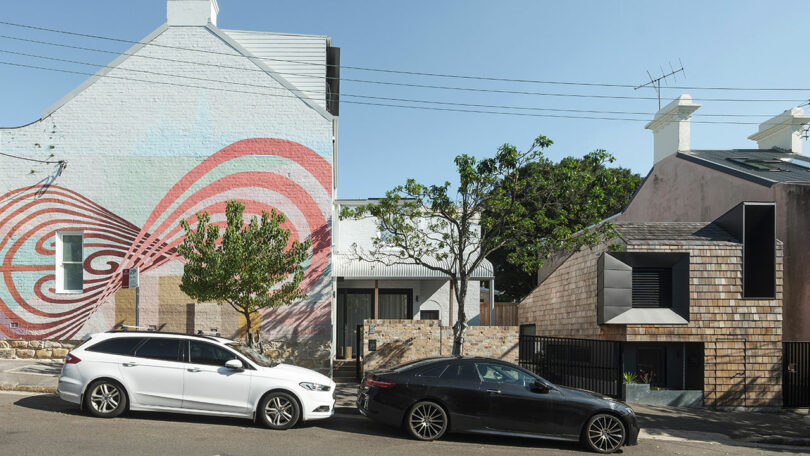Nestled in the dense urban suburb of Glebe, New South Wales, Australia, Pocket Passiv presents a unique solution to the housing challenges of inner-city living. Designed by Anderson Architecture, this tiny house project is a compact, sustainable residence that reimagines space utilization and energy efficiency. With a total area of just 366 square feet, the project makes ingenious use of a previously unused corner of a terrace house block, illustrating how even the smallest of spaces can be transformed into a functional, sustainable living environment.
Pocket Passiv embodies creativity in its compact design. Occupying a footprint of only 290 square feet, the two-story structure integrates a well-thought-out living arrangement. The lower floor combines a study and bedroom, while the upper floor houses a kitchen, dining, and living area, all within a minimalist framework. Despite its small size, the house manages to feel spacious, partly thanks to an impressive double-height bathroom and a clever use of vertical space. Submerged slightly below ground level, the design maintains privacy and ensures sunlight continues to reach neighboring courtyards. The building’s asymmetrical roof allows for hidden solar panels, balancing aesthetic considerations with energy generation needs.
Pocket Passiv’s greatest achievement lies in its commitment to sustainability. The house meets the stringent Passivhaus Plus standard, a benchmark for energy-efficient construction originating in Germany. This means the house not only consumes minimal energy but also generates as much power as it uses, making it a net-zero energy building. The thoughtful design, including high-performance insulation and airtight construction, ensures thermal efficiency and comfort for its occupants. The use of solar panels on the roof and other green technologies enables the building to remain largely self-sufficient in energy needs.
The project had to balance various constraints, including the demands of an inner-city location and the potential future needs of its occupants. From the outset, Pocket Passiv was designed with flexibility in mind. Its layout allows it to function as either a standalone residence or an extension of the larger terrace house on the property, opening up options for multigenerational living or rental opportunities. It even has the potential to serve as short-term accommodation with its own private street entrance. The split-level design offers a clear separation between living and private spaces, avoiding the cramped feeling of many studio apartments.
One of the key challenges in designing Pocket Passiv was making efficient use of the tight space while adhering to the client’s diverse needs. Originally envisioned as part of a broader renovation plan for the adjacent terrace house, the studio evolved into a standalone structure. This presented its own set of architectural hurdles, from maintaining privacy and access to natural light, to blending the new build harmoniously into its historic surroundings.
The project’s success can largely be attributed to the collaborative efforts between the client, architect, and builder, who worked together to achieve the ambitious sustainability goals. The use of wood shingles, which will weather over time, ensures that the building will age gracefully, adding to the architectural fabric of the Glebe neighborhood.
For more information on the Pocket Passiv house or Anderson Architecture, visit andersonarchitecture.com.au.
Photography by Tom Ferguson.
